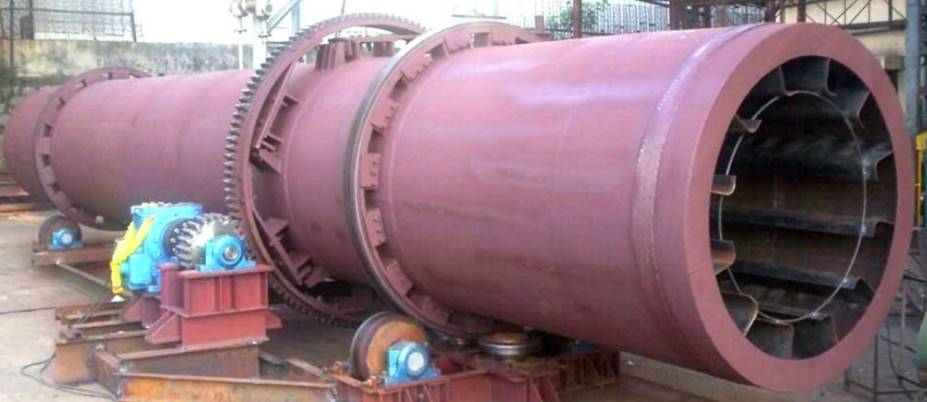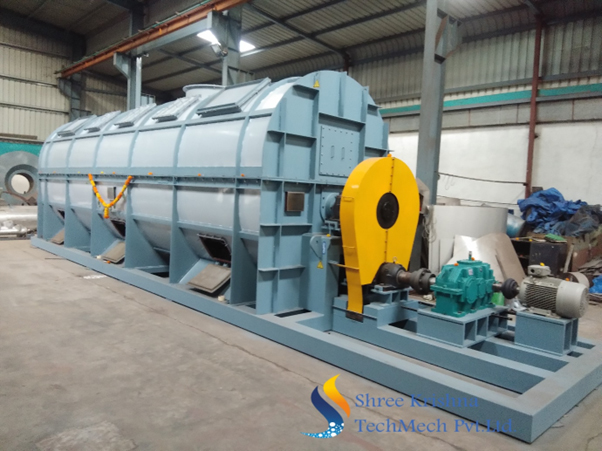1.Drum Dryer
Drum Dryer consists of a rotating drum, usually positioned horizontally, which is heated either by direct contact with hot air or by utilizing hot gases flowing through the drum. Wet or moist materials are fed into the inlet end of the drum and are continuously lifted and showered through the hot air or gas stream as the drum rotates. This process causes the moisture to evaporate, resulting in dried solids exiting from the other end of the drum.

2. Steam Tube Bundle Rotary Dryer
Unlike traditional rotary drum dryers, which utilize a rotating drum or shell, this advanced design incorporates a stationary shell with internal steam tube bundle.
The concept of a steam tube rotary dryer revolves around the principle of indirect heating. Steam is introduced into the tubes, which are positioned inside the stationary shell. The material to be dried is fed into the shell, and as it comes into contact with these rotating hot steam tubes, the heat is transferred to the material, causing moisture to evaporate. The feed material is continuously lifted, showered with the help of shovels provided on tube bundle
The absence of a rotating shell eliminates the need for complicated mechanical components, such as tires, trunnion rollers, and drive systems. This simplification results in a more compact and efficient design, reducing maintenance requirements and enhancing overall reliability.

General Rotary dryer applications are
1. Braveries - DDGS (Dried Distillers Grain Solid)
2. Chemical Industries - Salts, Phosphates, Metal sludge, Soda Ash, Silica, Carbon Black.
3. Petrochemical Industries - Polymers, PVC, HDPE, PTA.
4. Mineral Industries - Clay, Coal, Fireclay, Limestone, Axonove, Sand, Slag.




